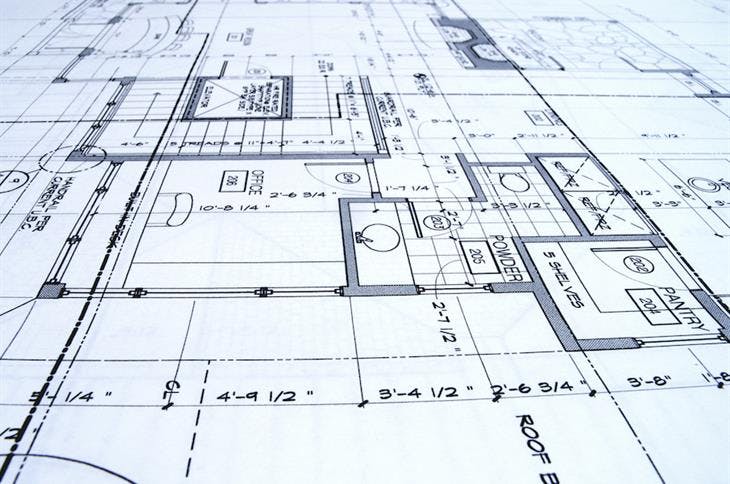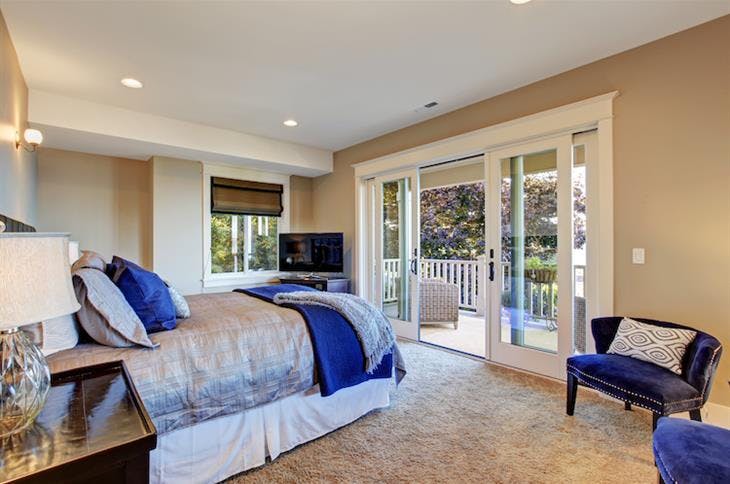When you’re planning to build a new custom house, the floor plan or architectural blueprint is your map to a new life. Many people look at it and visualize the design home of their dreams stretching out before them. The truth is a floor plan can be complex and hard to understand, and new homeowners often react in surprise when they realize how different the finished project is from what they pictured. Here’s how to read and understand a floor plan so you avoid any surprises.
What’s Included in a Floor Plan
First off, floor plans no longer come in the form of a large document you unroll on a table. Those used to be called blueprints, and they contained a plethora of instructions that you needed prior training to understand. Fortunately, it’s simpler today with digital technology having the ability to provide non-industry people with a version of the floor plan that contains only what they need to know, in a digital file format you can view on screen or print out in sections at any size you want.
A set of plans usually includes:
– A site plan
– Building notes
– Diagram of each level of the house
– Framing and roofing specifications
– Plans for the electrical and mechanical systems
Plans are often divided into design drawings, which includes some information about fixtures and fittings for non-professionals, and architectural or construction drawings that contain more technical details and are used by the building team to erect the design home.
Plan Symbols and Features
Every aspect of the floor plan for a custom house is indicated by a symbol or feature well-known in the construction industry. Walls are indicated by parallel lines, which could either be solid or filled with a pattern. Gaps in the walls represent the location of doors, windows, and other openings.
Doors and Windows
The door symbols usually include an arc, which shows the direction in which the door opens. Sliding doors are shown without the arc, and you’ll typically see them drawn as partly open along the wall. Windows appear as a break in a wall, but with a thin line that indicates the glass and frame. The location and size of these features also give homeowners a sense of the amount of natural light they can expect to get, as well as the quantity of sun and warmth the design home will have.
Stairways
Stairs appear on floor plans as a strip divided into rectangular blocks, and may have an arrow showing the direction of the staircase. If the stairs extend more than 3 feet above the floor, they are shown with a diagonal line cutting across them. Stairs above this mark are shown with dashed lines.
Fixtures and Fittings
Most floor plans show where primary fixtures are installed, such as toilets, sinks, and bathtubs. One reason for this is that bathrooms and kitchens need to follow fairly exact specifications to comply with safety and building codes. A refrigerator, for example, needs to be in a precise location compared with the sink, while a toilet that is installed too close to a vanity could be difficult to use comfortably. A design drawing usually also includes the overall dimensions of each room, although the construction drawings contain much more detailed measurements.
Furniture
In some instances, floor plans also show the location of main pieces of furniture such as a bed or sofa, to enable the buyer to visualize what the most likely layout will look like. It’s important to check the dimensions of the furniture you plan to bring with you against any shown in the diagram, otherwise you could find yourself with a different mental image than the finished version.
Lighting and Windows
One key aspect often depicted in floor plans is the placement and size of windows and other sources of natural light. This is critical because natural light can significantly affect the ambiance of a room, making it feel larger, more welcoming, and more comfortable. When examining a floor plan, look for the direction windows are facing to anticipate the amount of sunlight your home will receive throughout the day. This can also help in planning energy use, as homes with excellent natural lighting can reduce the need for artificial light, lowering electricity costs.
Electrical Outlets and Switches
Though not always included in basic floor plans, the location of electrical outlets and switches is another detail to look out for or ask about. The availability and convenient placement of these can greatly influence how a room is arranged and used. For instance, a bedroom without adequately placed outlets may limit where you can place your bed if you wish to have bedside lamps or charge devices easily. Similarly, the placement of switches should be logical and easily accessible to enhance the room’s functionality.
Ceiling Height
The height of the ceilings is another factor that dramatically influences the feel and utility of a space, yet it is often overlooked in floor plans. High ceilings can make a room feel more spacious and luxurious, while lower ceilings can foster a cozier atmosphere. However, ceiling height can also affect heating costs and furniture placement. For those reasons, asking for this information or looking for it in the design specifications can be crucial.
Outdoor Spaces
For many, outdoor spaces such as patios, decks, and balconies are considered extensions of the living area, particularly in favorable climates. Floor plans often outline these areas, and understanding their size and orientation can help you plan outdoor activities, gardening, or merely lounging. The connection between indoor and outdoor spaces can also influence the natural light entering the home and the overall flow of the space.
Future Modifications
Finally, while a floor plan may meet your current needs, it’s worth considering any potential for future modifications or expansions. Some plans may include optional spaces or suggest areas where expansions would be feasible. Understanding these possibilities can help in planning for the long term, ensuring that the home remains functional as your needs evolve.
A comprehensive floor plan enables you to visualize what your future design home will look like, and whether the furnishings you want will work in it or not.
If you need assistance understanding the various components of the plan, contact us to get input from our helpful team members.



